Homemade clotted cream is so easy to make in the oven, just needing heavy cream and time. Served with scones and jam, clotted cream really elevates afternoon tea to something special!

Jump to:
[March, 2022: I've reworked the recipe and updated this post with all new pictures. Enjoy!]
Why this recipe works
- One ingredient and time is all that's needed
- Tastes sweet, fresh, and creamy
- Clotted cream is a perfect accompaniment to scones
Clotted cream is something I think of that is so part of the afternoon tea tradition, so British, that I always assume it will come alongside the scones before or after the tea sandwiches. You know, as in “here are your scones with clotted cream and jam.” It just rolls off the tongue.
Many times through the years of going to afternoon tea for my daughters’ birthdays, there was no clotted cream. Mostly we were served whipped cream, or sometimes butter. How disappointing!
It's not surprising though. In the US, clotted cream is quite expensive, if you can find it at all.
Actually, it's just not necessary to spend lots of money on a tiny jar of clotted cream (if you can find it, that is). Just grab a pint of heavy cream, turn on the oven, and walk away for a few hours.
Clotted cream is delicious, with a sweet, slightly cooked heavy cream flavor and a creamy texture that can hold a spoon upright. Use clotted cream for scones with jam for a traditional take on afternoon tea. It's also delicious on muffins, quick breads (like a slice of toasted pumpkin bread), or even crumpets.
The result will be well worth the wait!
Recipe Ingredients
You'll need the following ingredients to make this homemade clotted cream recipe:

Ingredient Notes
Heavy Cream: As it turns out, making clotted cream is surprisingly easy. You just need heavy cream and time. Heavy cream (aka heavy whipping cream, or double cream in the UK) is cream that has a high fat content, usually above 36%.
Traditionally, clotted cream is made with unpasteurized cream, but that's illegal to sell in the US. The closest thing to raw cream is pasteurized cream, that is, cream that's been heated to 167˚F for 15 seconds, then chilled. This is done to kill most of the harmful bacteria in the cream and increase its shelf life.
You might see that the heavy cream in the dairy case is ultra pasteurized. What is the difference between pasteurized and ultra pasteurized cream? The main difference is ultra pasteurized cream is heated to 280°F for a minimum 2 seconds. This kills virtually all of the harmful bacteria in the cream, and its shelf life is longer than normal pasteurized cream.
There is a caveat though. If you use ultra pasteurized cream in a clotted cream recipe, it won't...uhm...clot (that is, the cream won't separate from the whey). It's best to use non-ultra-pasteurized heavy cream when making this clotted cream recipe.
See the recipe card for the specifics.
Check if your oven has Auto Shut Off
Some ovens have a 12-Hour Auto Shut Off feature (check the owner's manual to see if that's the case for your oven). If it does, you'll either have to toggle off that feature to make this recipe, or check the cream after 12 hours and restart the oven if it's not done. Otherwise, the cream may not cook long enough to fully set.
You don't want the cream cooling in the turned-off oven for an extended period of time - it increases the risks of bacterial growth that can cause food borne illnesses.
How to make clotted cream
This recipe for clotted cream uses the oven to slow cook the heavy cream. It's super easy, and doesn't require much monitoring.
Step 1: Heat the heavy cream
Pour the heavy cream into a glass, ceramic, or another non-reactive 9-inch pie pan. Place the pan in a 175˚F oven for 12 hours, or overnight (photo 1). Don't disturb the pan during this time, so no stirring.

The gentle heating slowly cooks the heavy cream, and it separates into thickened and watery whey layers (photo 2).
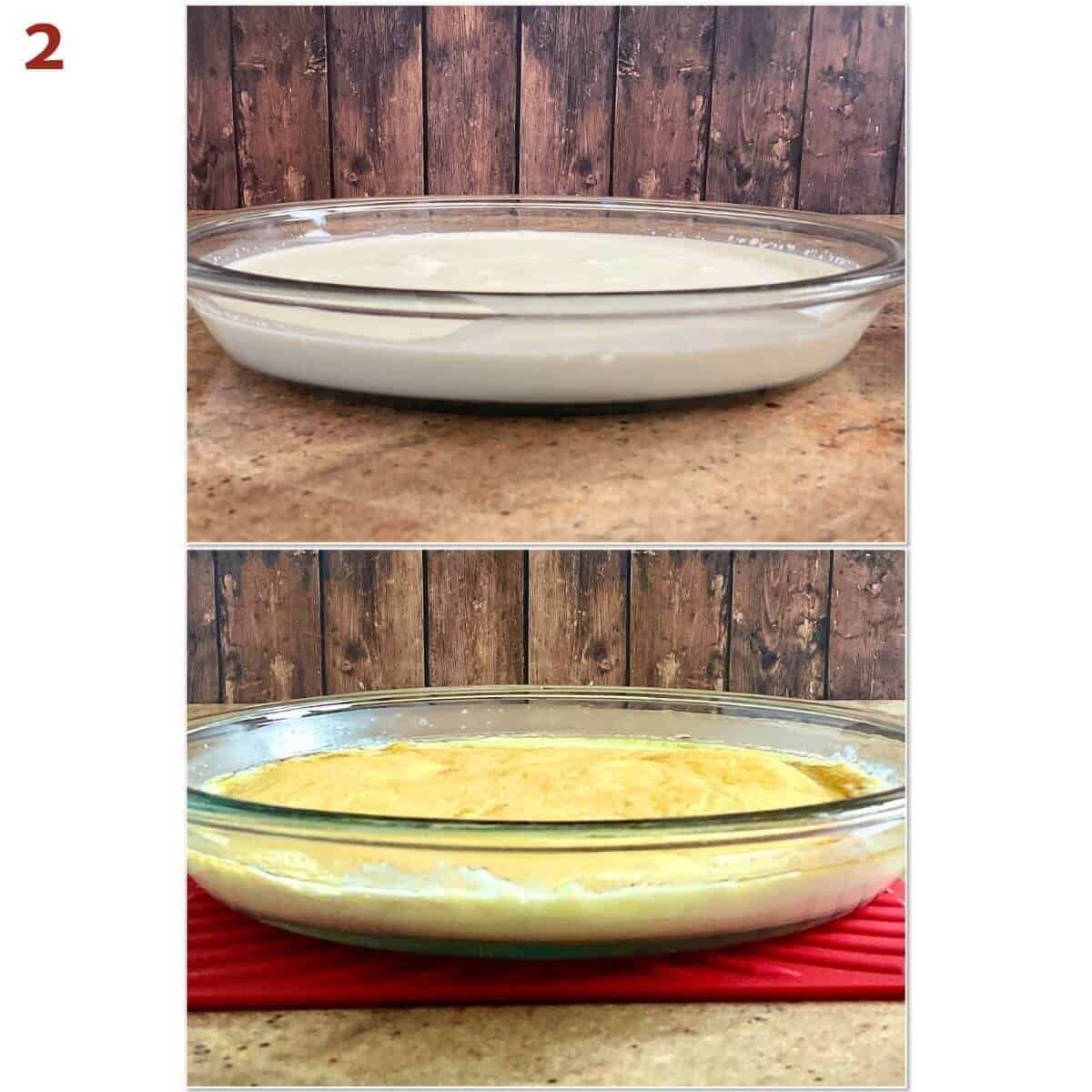
Step 2: Skim the thickened cream layer
Carefully remove the pan from the oven, keeping the pan steady. You don't want to mix the thickened cream into the whey layer underneath. Allow the cream to cool for 30 minutes, then cover and refrigerate for another 12 hours.
Once the cream has chilled, use a slotted spoon to gently skim off the thickened layer on top of the whey layer and place in another bowl (photo 3).
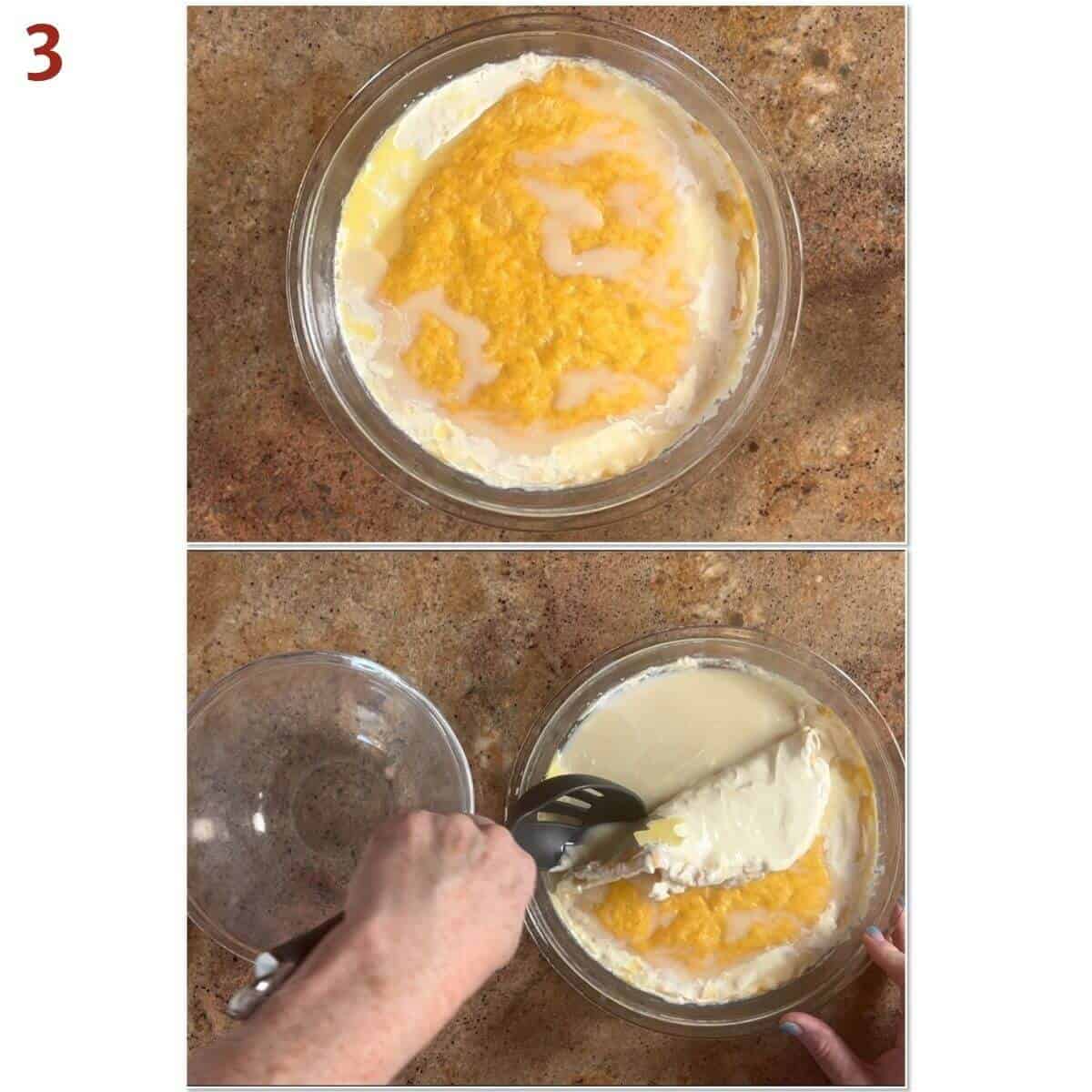
Step 4: Stir the thickened cream until smooth
If you want, stir the thickened creamy layer and any whey present until the mixture has a smooth, creamy texture. There might be small pieces of the leathery layer, but that's fine (photo 4). Otherwise, you can remove the crust and chill the remaining clotted cream (the whey will get reabsorbed).
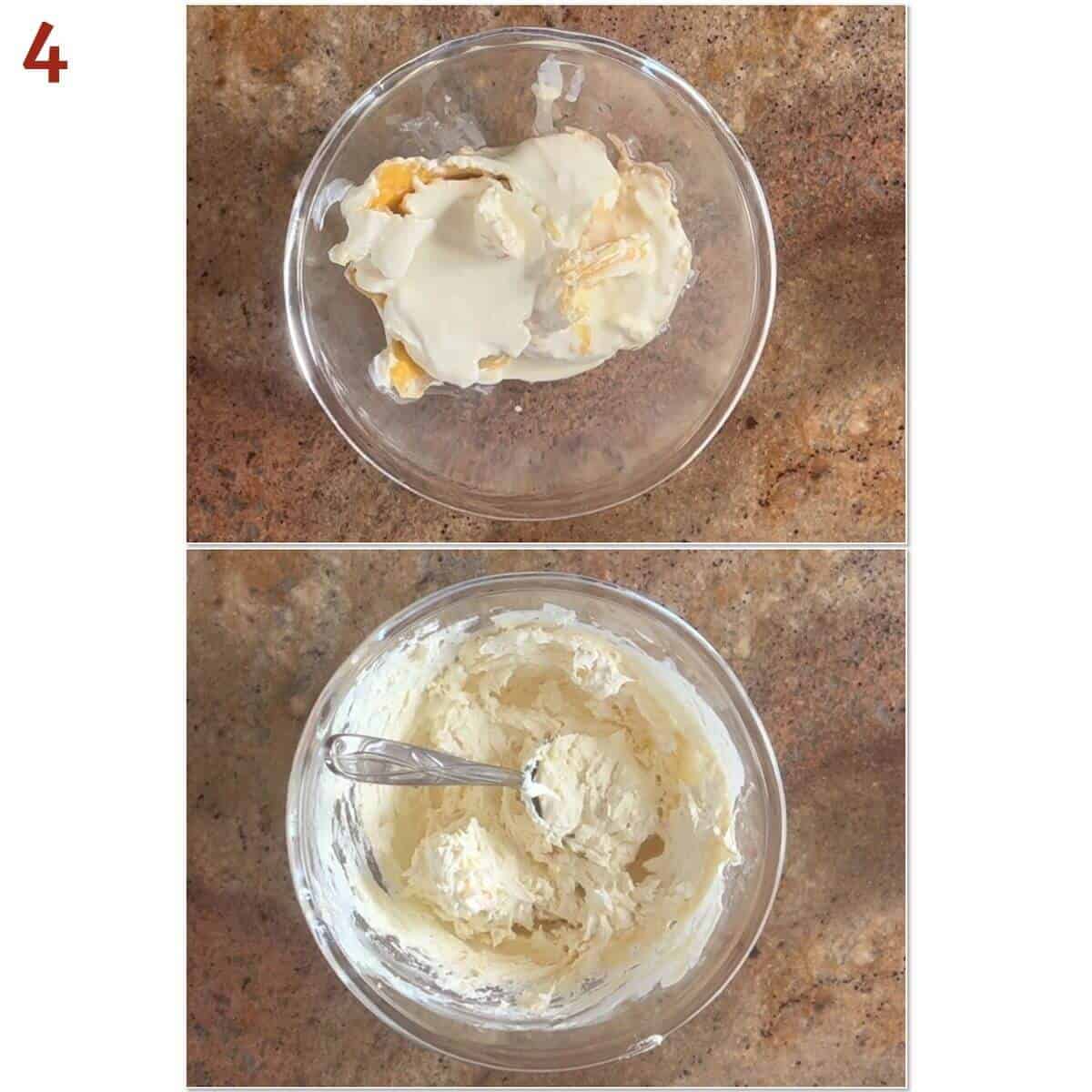
Storage instructions
Clotted cream will keep in the refrigerator, like unsalted butter, for 5 days (and even up to 2 weeks). For best flavor, bring to room temperature before serving.
Clotted cream can be frozen for up to 6 months in a tightly sealed jar. Thaw overnight in the refrigerator, then bring to room temperature and enjoy!
Yield Notes
This recipe makes 1 cup of clotted cream and ½ cup of whey. You can easily double the recipe using a glass, ceramic, or another non-reactive 8- x 8-inch or 9- x 9-inch baking pan. The heavy cream should be about 1½ to 2 inches deep in the pan.
How to use leftover whey
What can you do with the leftover whey from clotted cream? Don't toss it! Think of this liquid as thin milk. Since this clotted cream recipe makes 1 cup of cream and ½ cup of whey, you can use it to make scones or biscuits.
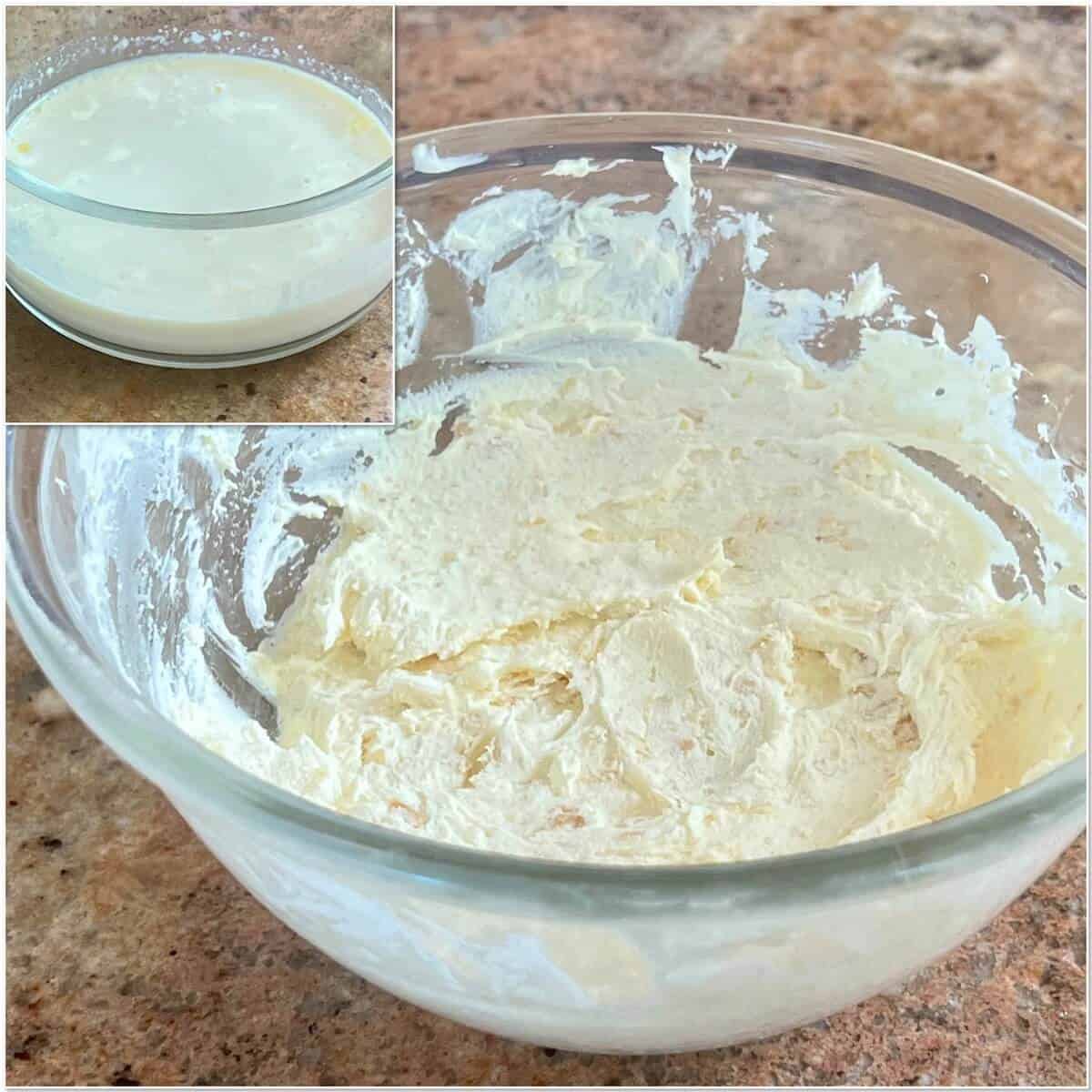
Questions asked and answered
Here are some questions you might have...
It's a thick spread with a texture similar to softened butter. Slightly sweet, clotted cream has a rich, lightly cooked cream flavor.
The white or yellow crust that forms after the cream has cooked is perfectly normal, and said to be prized in the UK for its deep flavor. You can stir it in to the rest of the cream to get little bits of texture from your spread.
Simply stated, not much. Devon cream (aka Devonshire cream) is clotted cream made in Devon (in the UK). In much the same way, Cornish cream is clotted cream made in Cornwall. There might be some textural differences in the clotted creams based on the characteristics of the cream available in those locations, but for our purposes, let's just say they're all similar and call it a day.
While both clotted cream and whipped cream start with the same ingredient, the preparation methods creating products with vastly different qualities. In clotted cream, the heavy cream heated to separate the milk solids from the whey, creating a thick product with a solid, creamy texture. With whipped cream, air is beaten into the heavy cream to product a product that is light and fluffy. Whipped cream is also commonly sweetened and sometimes flavored with extracts, while clotted cream remains unsweetened.
While both clotted cream and butter start with the same ingredient and have similar textures, the way they're made makes the difference. Butter is churned (agitated), which causes the milk solids to separate from the whey. When you over-whip whipped cream, you end up with butter. With clotted cream, heat is used to separate the solids from the whey, and no churning is required.
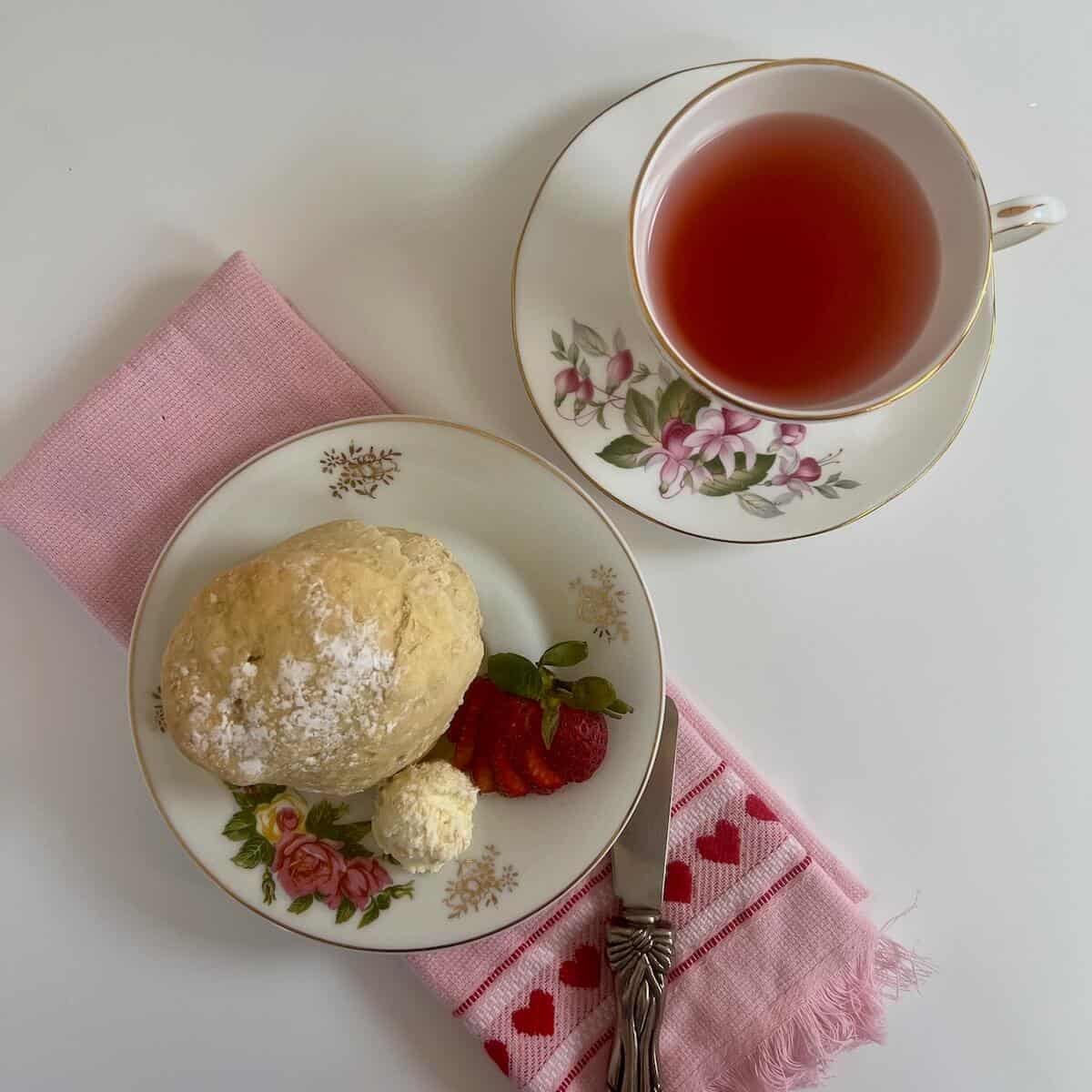
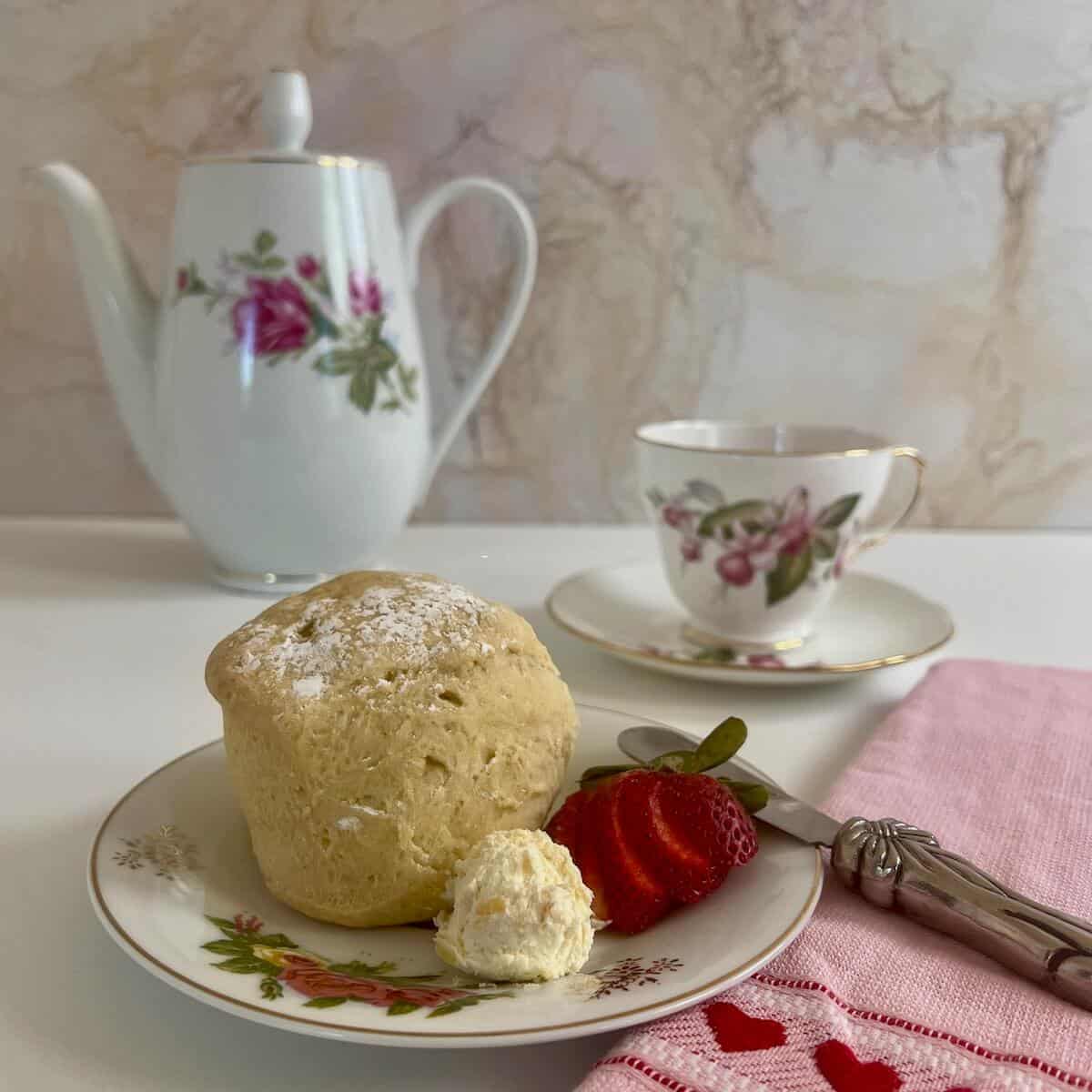
More scone & condiment recipes to try
Recipe

How to Make Clotted Cream (Oven Method)
Equipment
- 9-inch glass pie pan ceramic, or non-reactive (22-centimeters)
- slotted spoon
Ingredients
- 2 cups heavy cream, NOT ultra-pasteurized, see Recipe Notes
Instructions
- Preheat the oven to 175 °F. This is usually the lowest temperature an oven can go.
- Pour the heavy cream into a glass or ceramic 9-inch pie pan. Place the pan in the oven for at least 12 hours (or overnight). Don't disturb the pan during this time, so no stirring.
- Carefully remove the pan from the oven, keeping the pan steady. You don't want to mix the thickened cream into the whey layer underneath. Allow the cream to cool for 30 minutes, then cover and refrigerate for another 12 hours.
- Once the cream has chilled, use a slotted spoon to gently skim off the thickened layer on top of the whey layer and place in another bowl. You can transfer the remaining whey to another jar to use in scones or biscuits.
- If you want, stir the thickened creamy layer and any whey present until the mixture has a smooth, creamy texture. There might be small pieces of the leathery layer, but that's fine. Otherwise, you can remove the crust and chill the remaining clotted cream (the whey will get reabsorbed).
- Place the clotted cream a tightly sealed container, like a mason jar.
- Storage instructions: Clotted cream will keep in the refrigerator, like unsalted butter, for 5 days (and even up to 2 weeks). For best flavor, bring to room temperature before serving.Clotted cream can be frozen for up to 6 months in a tightly sealed jar. Thaw overnight in the refrigerator, then bring to room temperature and enjoy!
- This recipe makes 1 cup of clotted cream and ½ cup of whey. You can easily double the recipe using a glass, ceramic, or another non-reactive 8- x 8-inch or 9- x 9- inch baking pan. The heavy cream should be about 1½ to 2 inches (3.8 to 5 cm) deep in the pan.



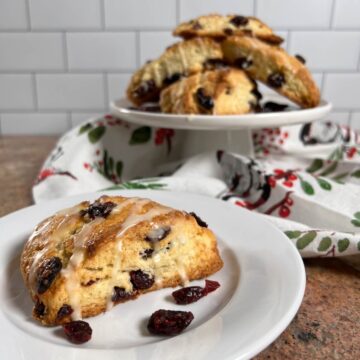



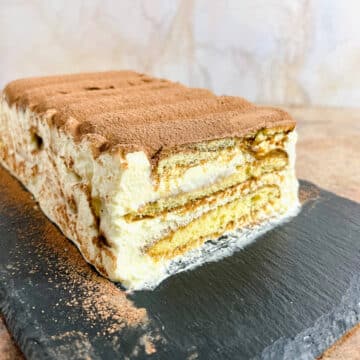

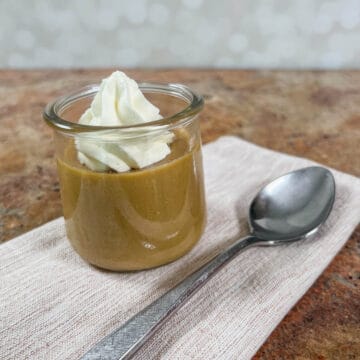


Martin Swift says
Hi Tammy after leaving my cream in a 180 degree oven for 12 hrs overnight I discovered my oven had turned its self off my clotted cream hadn’t finished baking. Can I relight my oven and continue or do I have to start again completely?
Tammy Spencer says
Hi Martin, Another commenter had the same issue with the oven shutting down. He had chilled the cream but it still didn’t set, then asked what to do. I suggested that the cream wasn’t cooked enough and to try it again. I don’t know what that outcome was.
In your case and as far as I know, the cream hasn’t been cooked long enough and hasn’t been chilled, so it’s been cooling at room temperature. Perishable foods shouldn’t be held between 40°F - 140°F for an extended period of time - it increases the risks of bacterial growth that can cause food borne illnesses. Unfortunately, I would have to recommend throwing your cream away and trying again.
FWIW, I was unaware that some ovens have an auto shutoff feature (my oven doesn’t have one), so you’ll need to allow for that when coming up with the timing for cooking your clotted cream. I’ll note that in the recipe card. Thanks for sharing your experience, and good luck!
Debbie Watts says
This sounds & looks amazing!! Thank you so much for sharing the recipe & your insightful tips!!
Tammy Spencer says
Enjoy! 😉
Julie Sanders says
I chose the metric option. So 1L of cream. So far so good. Then all else was 175F (Celsius?) Then 9 inch pie pan (Centimetres?)
I've looked up the metric measurements, so all good. Please, if you have a metric option, let it be metric
Tammy Spencer says
Hi Julie,
Usually the toggle between US Customary and metric converts the oven temperatures as well as the ingredients, so I'm not sure why that's not working at the moment but I'll look into it. Thanks for alerting me to this problem. I did add the metric conversion for the pie pan for this post. 😉
Tammy Spencer says
Hi Susan, I’m glad you liked the recipe. As for flavoring, I haven’t tried it myself - I prefer the the rich, clean flavor of the clotted cream itself. However, I suppose you could steep the heavy cream by simmering it with some sort of flavoring agent (like a split vanilla bean) for maybe 30 minutes before reducing the cream. If you try this, please let me know how it goes. Good luck, and happy baking! 😉
Denise Clavette says
I’m excited to try this recipe. A friend told me about this and I found you on this website.
Tammy Spencer says
Hi Denise, I hope you like it! 😉
Beth says
Here in Texas at least we can buy raw milk and raw cream. it's legal in some other states. you just have to check your states regulations. I cant wait to try this recipe.
Tammy Spencer says
Enjoy!
David says
So, I purchased some very lightly pasteurized heavy cream from my local dairy who delivers in glass bottles. This is what they told me:
"At BVC, we use short-time pasteurization. Our milk is only heated up to a minimum of 161 degrees. We feel this gives the milk it's raw and natural taste. Ultra pasteurized is heated to a minimum of 220-280 degrees.
With short-time pasteurization (what we use) you can taste the difference in creaminess, freshness, and coldness.
We have a lot of people that cook and bake with our products and send us pictures or notes as to how 'amazing' it turned out - in part due to the pasteurization process we use!"
I put the cream in a corning glass container into our new GE gas range oven at 175 degrees F around 5pm last night. This morning around 8 I checked it to find out the oven was off. Apparently this oven shuts down automatically after 12 hours. There was a light brown crust on it, so I chilled it for about 10 hours. Unfortunately, the cream didn't fully clot. It thickened slightly but not nearly to what was needed.
So, do I try again and increase the temperature slightly, and make sure to reset the over so it goes longer than 12 hours? Or should 12 hours at 175 have been plenty and this cream won't do it?
Tammy Spencer says
Hi David, my guess would be that the cream didn’t cook down long enough. I’ve had that happen before, too. I think you should try again, perhaps at a slightly higher temperature as every oven is different. Good luck!
Victoria says
Tried your chocolate chip scone recipes for an afternoon tea and we agreed the only thing that could make them better would have been clotted cream, I should have known you would have a recipe on here for exactly that! Next time, I'll have to make them both!
Victoria says
Now having made the clotted cream, I can confirm that this was a very very good idea!